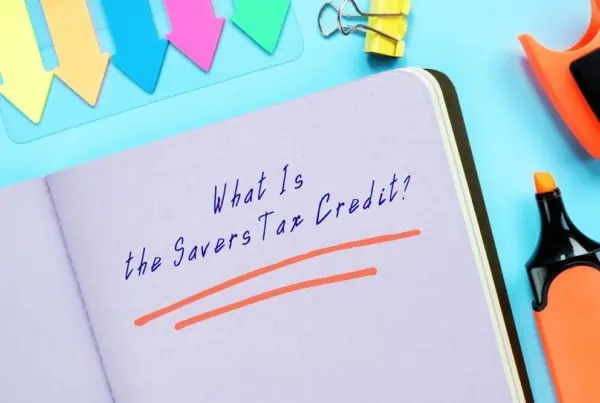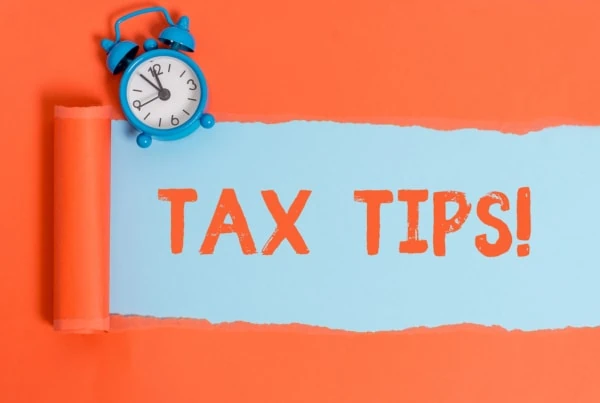School’s out for summer … which means it’s time to send your kids to summer camp! Whether it’s art camp, sports camp, science camp, theater camp, or something else, there’s sure to be a camp right up your child’s alley. You can also choose between day camps and overnight camps. The possibilities are almost limitless.
But summer camps can be quite expensive. So, it helps if you can somehow save a few bucks on summer camp fees. That’s why many parents are asking: Is summer camp tax deductible?
While there isn’t a tax deduction for summer camp costs, there is a tax credit you might be able to claim for summer camp expenses. It’s called the child and dependent care tax credit, and you could trim up to $2,100 off your tax bill if you qualify for this tax break.
You do need to jump through a lot of hoops to claim the child and dependent care credit, though. And, if you qualify, how much you can reduce your federal income taxes depends on your income and how many of your children are attending summer camp or otherwise receiving child care. But don’t worry—we’ll run through all the qualifications and calculations you need to know. With any luck, you’ll be as happy at tax time as your kids are at summer camp.
Editor’s Note: This story uses 2023 tax year figures to illustrate the tax deductibility of summer camp expenses. The numbers used in the examples are merely for illustrative purposes and would change based on the current tax year’s applicable rates and figures.
Related: 11 Education Tax Credits and Deductions
Who Can Claim the Tax Credit for Summer Camp Costs?
Not everyone can claim the child and dependent care credit for summer camp fees. You generally can only claim the credit for these expenses if all the following are true:
- Your child is either under age 13 or unable to care for himself or herself at the time he or she attended camp.
- You have earned income during the tax year.
- Your child is attending summer camp so you can work or look for work.
- If you’re married, you file a joint tax return for the year.
- You identify the summer camp provider on your tax return.
Let’s take a closer look at these requirements.
Qualifying Child
If you’re claiming the child and dependent care tax credit for a child who is under 13 years old, the child generally must be your dependent.
However, if you’re divorced or separated, the custodial parent can claim the credit. You’re the custodial parent if your child lived with you more nights than with the other parent during the tax year. If your child spent an equal number of nights with each parent, the parent with the higher adjusted gross income is considered to be the custodial parent.
A child living with you who is physically or mentally incapable of self care doesn’t have to be a dependent if he or she would have been your dependent if not for one of the following:
- The child received gross income of $4,700 or more during the tax year (2023 amount).
- The child filed a joint tax return.
- You, or your spouse if filing jointly, could be claimed as a dependent on someone else’s tax return.
Children who can’t dress, clean, or feed themselves because of a physical or mental problem are considered unable to care for themselves. The same is true if they need constant attention to prevent them from injuring themselves or others.
Earned Income
Earned income generally includes wages, salaries, tips, other taxable employee compensation, and net earnings from self-employment (a net loss from self-employment reduces earned income).
If you’re married, your spouse also must have earned income to claim the child and dependent care credit. A spouse who is either a full-time student or unable to care for himself or herself is treated as having at least $250 of earned income per month if there is one child receiving care in your home, or at least $500 if there are two or more children receiving care at any time during the year.
Work-Related Expenses
The child and dependent care credit is primarily designed to assist working parents cover child care expenses. However, an expense isn’t considered work related just because you paid it while you were working. Instead, the expense must actually allow you to work or look for work.
If you’re married, both you and your spouse generally must be working or looking for work to claim the credit. A spouse who is a full-time student or unable to care for himself or herself is treated as working.
An expense must be for the care for a qualifying child to be considered a work-related expense. However, according to the IRS, summer school and tutoring programs don’t qualify as child care. So, for instance, if your child attends a math tutoring program for two hours per day during the summer while you work, the cost of the program isn’t considered a work-related expense.
In addition, while the cost of sending your child to a day camp can qualify as a work-related expense, the IRS says the cost of sending your child to an overnight camp isn’t a work-related expense.
Married Filing Jointly
While married couples generally must file a joint tax return to claim the child and dependent care credit, you still might be able to file a separate return if you and your spouse are legally separated or living apart.
If you’re legally separated under a divorce decree or separate maintenance agreement, you can claim the credit if you use the head-of-household filing status and you otherwise qualify.
If you and your spouse are living apart, and you otherwise qualify for the credit, you can claim the child and dependent care credit if all the following are true:
- You use the married filing separately filing status.
- Your home is the home of the qualifying child for more than half the year.
- You pay more than half the cost of keeping up your home for the year.
- Your spouse doesn’t live in your home for the last six months of the year.
Identify Summer Camp on Your Tax Return
To claim the child and dependent care credit for costs related to summer camp, you must provide the camp’s name, address, and taxpayer identification number (TIN) to the IRS using Form 2441. Reputable summer camp facilities will be happy to provide the required information. However, you can use Form W-10 to formally request it.
A summer camp or other care provider can be hit with IRS penalties if they don’t provide the required information or provide incorrect information. However, you can still claim the credit if you can show due diligence in trying to provide the information (e.g., by obtaining and keeping a completed Form W-10, or a recent letter or invoice showing the care provider’s name, address, and TIN).
Related: Summer Jobs for Teens [Start Your Job Search Here]
How Much Is the Tax Credit for Summer Day Camp Costs?
If you’re claiming the child and dependent care tax credit for summer day camp expenses, the credit amount is equal to a percentage of your total qualifying work-related expenses. Your qualifying expenses are subject to an earned income limit and a dollar limit, and the percentage is based on your adjusted gross income.
In addition, you can’t count any summer camp fees or other childcare expenses that are paid with funds from a government social services program, employment benefit (including a dependent care FSA), or other reimbursement program.
Earned Income Limit on Qualifying Expenses
The total amount of all work-related expenses used to calculate your credit can’t exceed either:
- Your earned income for the year if you’re single at the end of the tax year
- The smaller of your or your spouse’s earned income for the year if you’re married at the end of the tax year
Example
Kyle and Ingrid are married. Kyle has $25,000 of earned income for the year. Ingrid has $2,500 of earned income for the year. They pay $3,000 during the year to send their 11-year-old daughter to summer day camp. They have no other childcare expenses for the year. Kyle and Ingrid can only use $2,500 of the camp costs to calculate their child and dependent care credit for the year.
Related: 30 Tax Statistics and Facts That Might Surprise You
Dollar Limit on Qualifying Expenses
The following dollar limits on the total amount of work-related expenses you can use to calculate the credit apply:
- $3,000 if you have one qualifying child
- $6,000 if you have two or more qualifying children
If you have multiple children, the maximum amount of expenses you can use to figure the credit is still $6,000 if you only paid qualifying childcare expenses for just one child.
Example
Andrew and Becky are married and have two children—a son who is 6 years old and a daughter who is 12. They pay $3,000 to send their son to summer day camp and an additional $10,000 to send him to an after-school daycare center. They have no camp or other childcare expenses during the year for their daughter. Andrew and Becky can only use $6,000 of their $13,000 in total camp and other childcare costs to calculate the child and dependent care credit for the year.
Percentage Applied to Qualifying Expenses
As noted above, the percentage used to calculate the tax credit for child and dependent care expenses depends on your income for the year. The lower your income, the higher the percentage.
Check the table below to see your percentage.
| Adjusted Gross Income | Percentage |
| $0 to $15,000 | 35% |
| $15,001 to $17,000 | 34% |
| $17,001 to $19,000 | 33% |
| $19,001 to $21,000 | 32% |
| $21,001 to $23,000 | 31% |
| $23,001 to $25,000 | 30% |
| $25,001 to $27,000 | 29% |
| $27,001 to $29,000 | 28% |
| $29,001 to $31,000 | 27% |
| $31,001 to $33,000 | 26% |
| $33,001 to $35,000 | 25% |
| $35,001 to $37,000 | 24% |
| $37,001 to $39,000 | 23% |
| $39,001 to $41,000 | 22% |
| $41,001 to $43,000 | 21% |
| $43,001 or more | 20% |
After applying the earned income and dollar limits to your work-related expenses, you must multiply the remaining qualifying expenses by the percentage to determine the amount of your credit.
Example
Eric and Margaux are married, have one child, and will file a joint tax return. They each have $15,000 of earned income and an adjusted gross income of $30,000. During the year, they pay $500 for summer day camp and $4,000 to another childcare provider during the year. However, they can only use $3,000 of their total $4,500 in childcare costs to calculate the child and dependent care credit for the year. Based on their income, their credit is equal to 27% of their qualifying expenses, which comes to $810 ($3,000 x 0.27 = $810).
Related: How Much to Save for Your Kid’s College
Is the Summer Camp Credit Refundable?
The child and dependent care tax credit is a non-refundable credit. As a result, if your tax liability before the credit is applied is less than the credit amount, your tax bill will be cut to $0, but you won’t get a tax refund.
That also means you can lose some of the credit if you don’t owe much tax. For example, if you owe $500 in tax and qualify for a $700 credit, you won’t owe any tax, but you won’t get a tax refund and $200 of the credit will basically be wasted.
If the credit was a refundable credit, you’d get a refund if your tax liability before the credit is applied was less than the credit amount. For instance, if you owed $500 in tax and qualified for a $700 credit, you would get a $200 refund.
Related: Tax Deadlines For the Entire Year
Other Expenses That Qualify for the Child and Dependent Care Credit
Of course, the child and dependent care credit isn’t just for summer camp expenses. It’s mainly used for work-related expenses paid to a daycare center, babysitter, nanny, or other person caring for a child 12 years old or younger.
However, the credit can also be claimed for expenses related to the care of other dependents—not just kids. It’s available for expenses to care for either:
- A spouse who was unable to care for himself or herself and lived with you for more than half the year
- Anyone else who can’t care for themself, lived with you for more than half of the year, and either (1) is your dependent, or (2) is not your dependent only because they had $4,700 or more in gross income (2023 amount), they filed a joint return, or you (or your spouse if you’re filing jointly) could have been claimed as a dependent on someone else’s tax return
Under this rule, adult children can claim the credit for an elderly parent living with them if they claim the parent as a dependent on their tax return.
Related: Best Debit Cards for Teens
Dependent Care FSA vs. Child and Dependent Care Credit
If your employer offers a dependent care flexible spending account (FSA) as part of its benefits package, you can have up to $5,000 taken out of your wages during the year and put into an account that can be used to pay for child and dependent care expenses (including the cost of summer day camp). That money is not included in your taxable income, so you can cut your tax bill by using a dependent care FSA.
However, you can’t claim the child and dependent care tax credit for expenses paid with funds in a dependent care FSA. So, if you have a dependent care FSA, you have to decide whether you’re better off using the FSA or taking the credit when it comes to paying summer camp and other child or dependent care expenses.
Generally speaking, maxing out and using a dependent care FSA is better from a federal income tax standpoint as your income rises, while relying on the tax credit is more beneficial if your income is lower (state taxes might alter your overall outcome).
Note, however, that if your pre-credit tax liability is less than the non-refundable credit amount, then you won’t be able to take full advantage of the credit (see the discussion of refundability above).
Example 1: $25,000 of taxable income
Nicholas, who is single, has one child, a 2023 adjusted gross income of $38,850, and a 2023 taxable income of $25,000 (AGI minus his standard deduction). That puts him in the 12% federal tax bracket. He pays a total of $7,000 for child care during the year. If Nicholas puts $5,000 in a dependent care FSA and uses it all to pay for child care expenses, he will have a tax savings of approximately $600 ($5,000 x .12 = $600). If he doesn’t have a dependent care FSA and claims the child and dependent care tax credit instead (qualified expenses limited to $3,000), his tax savings will be $690 ($3,000 x .23 = $690). So, Nicholas saves an additional $90 by claiming the tax credit.
Example 2: $50,000 of taxable income
Cindy, who is single, has one child, a 2023 adjusted gross income of $68,850, and a 2023 taxable income of $50,000. That puts her in the 22% federal tax bracket. She pays a total of $7,000 for child care during the year. If Cindy puts $5,000 in a dependent care FSA and uses it all to pay for child care expenses, she will have a tax savings of approximately $1,100 ($5,000 x .22 = $1,100). If she doesn’t have a dependent care FSA and claims the child and dependent care tax credit instead, her tax savings will be only $600 ($3,000 x .20 = $600). So, Cindy saves an additional $500 by using a dependent care FSA.
Example 3: $150,000 of taxable income
Beth, who is single, has one child, a 2023 adjusted gross income of $163,850, and a 2023 taxable income of $150,000. That puts her in the 24% federal tax bracket. She pays a total of $7,000 for child care during the year. If Beth puts $5,000 in a dependent care FSA and uses it all to pay for child care expenses, she will have a tax savings of approximately $1,200 ($5,000 x .24 = $1,200). If she doesn’t have a dependent care FSA and claims the child and dependent care tax credit instead, her tax savings will be only $600 ($3,000 x .20 = $600). So, Beth saves an additional $600 by using a dependent care FSA.
You Can Use Both
If you have two or more children, you might be able to use both a dependent care FSA and the child and dependent care tax credit to save even more. If your total childcare expenses for the year are $6,000 or more, you can use your FSA to pay for the first $5,000 of expenses, and then claim the credit for the additional $1,000.
Example
Charlie, who is single, has two children, a 2023 adjusted gross income of $113,850, and a 2023 taxable income of $100,000. That puts him in the 24% federal tax bracket. He pays a total of $7,000 for child care during the year. If Charlie puts $5,000 in a dependent care FSA and uses it all to pay for child care expenses, he will have a tax savings of approximately $1,200 ($5,000 x .24 = $1,200). If he also claims the child and dependent care tax credit for the remaining $1,000 (qualified expenses limited to $6,000), his additional tax savings will be $200 ($1,000 x .20 = $200). So, Charlie saves a combined total of $1,400 by using both his dependent care FSA and the tax credit.
Related:













